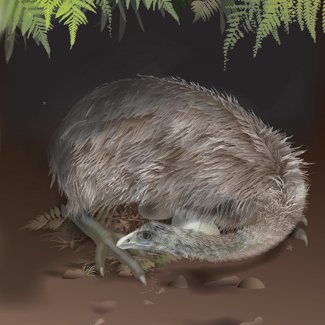Moa fathers looked after fragile eggs

EGGS OF THE LARGEST birds ever to have lived – New Zealand’s extinct giant moa – are surprisingly fragile, scientists have found. And they appear to have been incubated by fathers, not mothers.
Hunted to oblivion about 600 years ago, the 2.5-m tall, 250-kg moas laid eggs measuring barely more than a millimetre thick, Queensland scientists say. The puzzle is how a bird of this size could have incubated such delicate eggs without cracking them.
“Their fragility is astounding,” says evolutionary biologist Professor David Lambert from Griffith University in Queensland, who led the study. “Even though the largest moa eggs were 80 times larger than those of a chicken, they were more prone to breaking than any egg from the 3,400 species of birds measured to date.”
David and colleagues took DNA from both the inside and outside surfaces of ancient eggs from seven of the 10 species of moas. The eggs, now stored at universities and museums around the country, were originally collected from archaeological middens, rock-shelters, caves, and dunes.
The team’s analysis identified which moa species each egg belonged to, and revealed the structure of the eggs and incubation behaviour of the parents. It is the first time that foreign DNA has been successfully collected from the outside of ancient eggs.
“Many researchers accept that it is possible to recover DNA that comes directly from cells in ancient tissues like bone. But DNA hadn’t been recovered from the outside of eggshells,” David told Australian Geographic. “It’s a very exciting finding.”
Fatherly love
David says much of the DNA collected from the shells’ outer surface was male, suggesting that fathers were responsible for incubating the eggs. Moa females could be twice the size of males, but, says Leon, males would still have had difficulty sitting on the fragile eggs, necessitating a different method of incubation.
“These birds would have had to practice a novel way of keeping the eggs warm. There is little evidence of a supported nest, so perhaps the birds curled around the eggs to incubate them,” says Leon.
Biological scientist Professor Mark Hauber from the City University of New York says the researchers’ insights into moa behaviour will allow others to treat the birds as a case study of evolutionary theory. “Their methods allow for the reconstruction of the behaviour of a group of animals who were not documented by scientists before becoming extinct,” he says.
The findings were published this week online in the journal Proceedings of the National Academy of Science.

